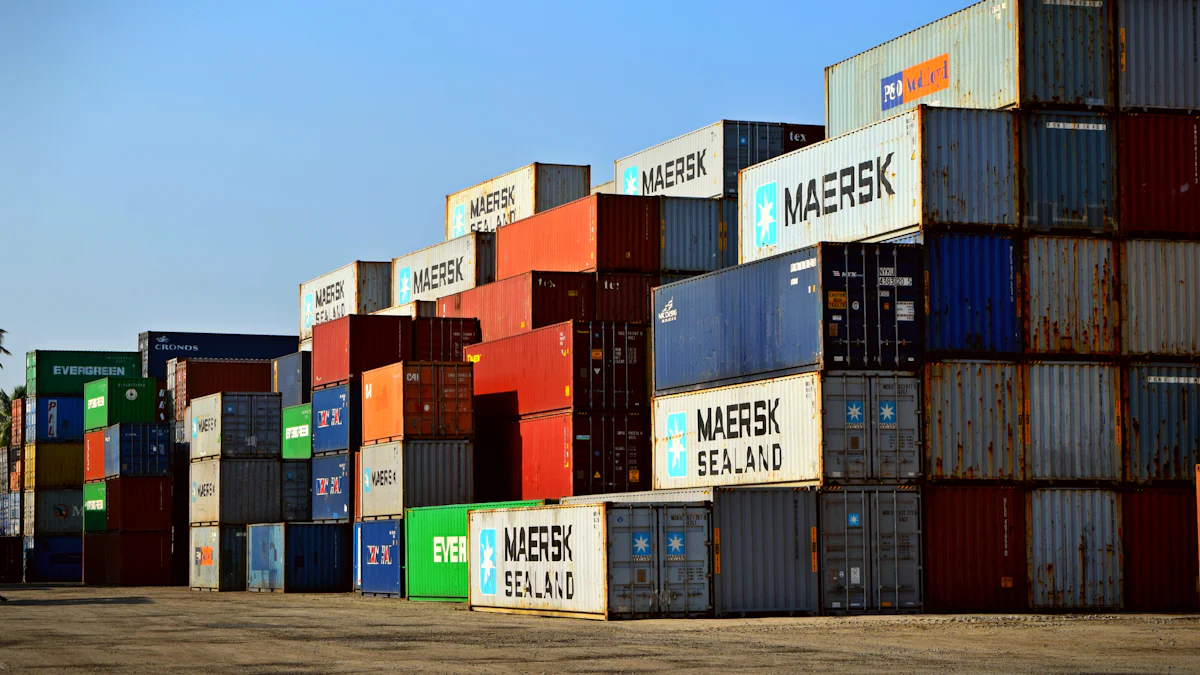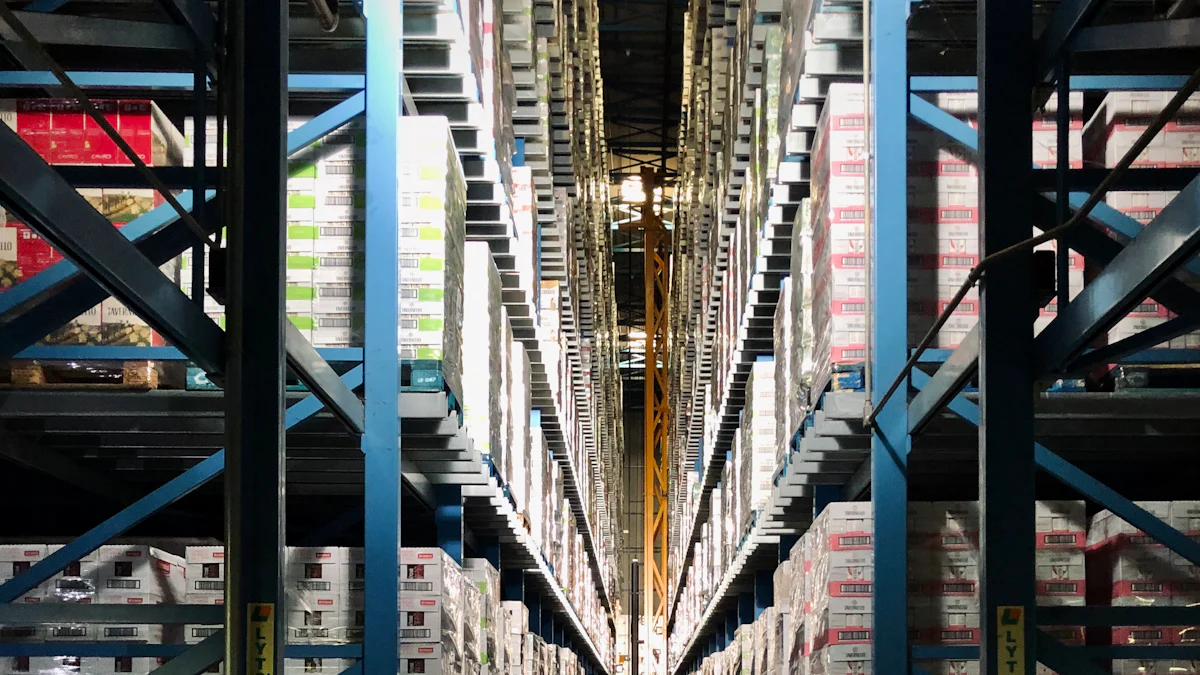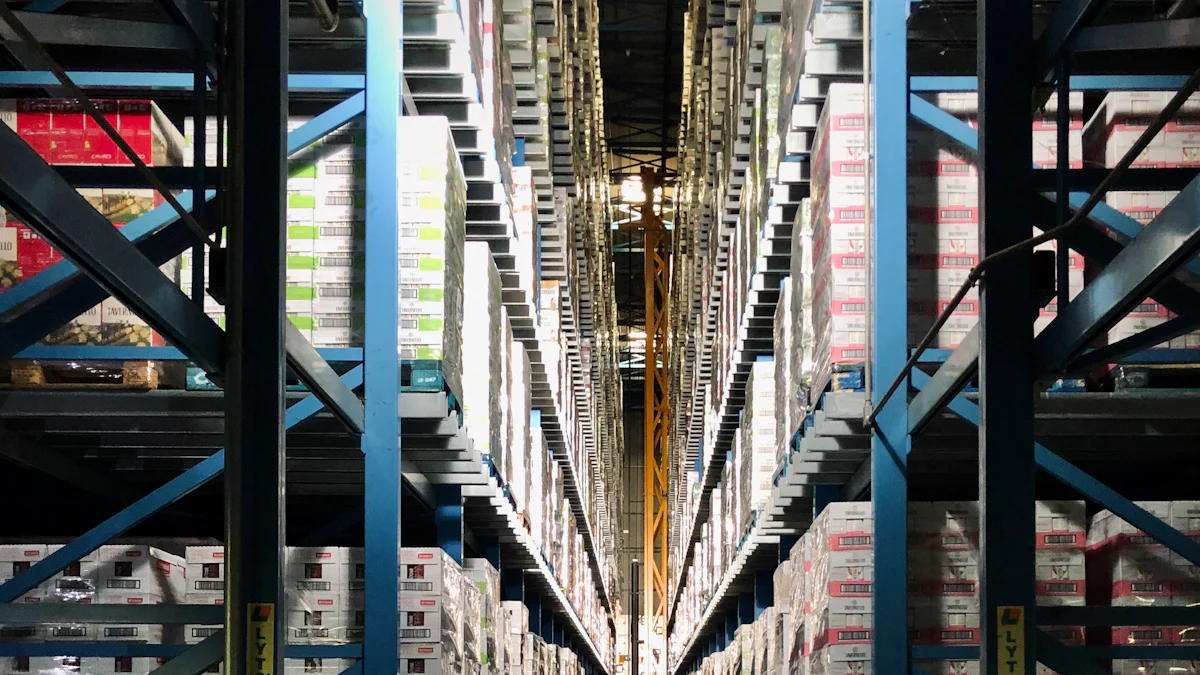Effortless Excellence: Achieving Supply Chain Continuity

Maintaining supply chain continuity is paramount for businesses to uphold seamless operations and ensure consistent product delivery. The uninterrupted flow of goods and services from suppliers to customers is essential for sustained success. This blog delves into the significance of supply chain continuity, exploring strategies, tools, and best practices to achieve operational excellence in today's dynamic business landscape.
Importance of Supply Chain Continuity
In the realm of business operations, safeguarding critical operations is a fundamental aspect of supply chain continuity. Protecting essential functions and processes ensures that the organization can withstand disruptions and maintain operational efficiency. Stakeholders play a pivotal role in this framework, as their interests and contributions significantly impact the overall supply chain ecosystem.
Customer satisfaction hinges on two key pillars: timely delivery and consistent quality. Ensuring products reach customers promptly is paramount for meeting expectations and fostering loyalty. Likewise, maintaining a high standard of quality across all deliveries enhances brand reputation and customer trust.
Financial stability is a cornerstone of supply chain continuity, with cost reduction strategies playing a crucial role in optimizing operational efficiency. By identifying areas where costs can be minimized without compromising quality or service levels, organizations can enhance their financial resilience. Moreover, revenue assurance mechanisms help mitigate risks associated with fluctuating market conditions, ensuring a steady income stream.
As businesses navigate through uncertain times and evolving market landscapes, prioritizing supply chain continuity becomes increasingly vital. By fortifying critical operations, prioritizing stakeholder relationships, meeting customer expectations, optimizing financial performance, organizations can build a robust foundation for sustained success.
Strategies for Achieving Supply Chain Continuity

In the realm of supply chain continuity, effective risk management is a critical component that organizations must prioritize. By proactively identifying potential risks, companies can anticipate challenges and implement preemptive measures to mitigate their impact. This proactive approach allows businesses to safeguard their operations and maintain a seamless flow of goods and services.
Identifying Risks
Identifying risks within the supply chain involves conducting thorough assessments of various factors that could disrupt operations. From supplier dependencies to market fluctuations, understanding these risks enables organizations to develop targeted strategies for risk mitigation. By pinpointing vulnerabilities early on, companies can enhance their resilience and ensure business continuity.
Assessing Risks
Once risks have been identified, the next step is to assess their potential impact on the supply chain. Through comprehensive risk assessments, organizations can prioritize threats based on severity and likelihood. This structured approach empowers businesses to allocate resources effectively, focusing on areas that pose the greatest risk to supply chain continuity. By evaluating risks systematically, companies can develop tailored solutions that address specific vulnerabilities and enhance overall operational resilience.
Business Continuity Plans
Developing robust business continuity plans is essential for ensuring supply chain continuity in the face of disruptions. These plans outline clear procedures and protocols to follow in times of crisis, enabling swift responses to unforeseen events. By establishing well-defined processes for emergency situations, organizations can minimize downtime and maintain operational efficiency.
Collaborating with Suppliers
Collaborating closely with suppliers is key to enhancing supply chain resilience and fostering long-term partnerships. By engaging in open communication and sharing best practices, companies can build trust with suppliers and streamline collaboration efforts. This collaborative approach not only strengthens relationships but also ensures alignment across the supply chain ecosystem.
Supply Chain Resilience
Building resilience within the supply chain requires a multifaceted approach that encompasses both proactive measures and reactive strategies. Organizations must invest in infrastructure improvements, redundancy planning, and contingency measures to fortify their supply chains against unforeseen events.
Building Resilience
Building resilience involves diversifying sourcing options, investing in technology solutions, and implementing robust monitoring systems. By creating redundancies at critical points along the supply chain, companies can minimize disruptions and maintain consistent operations even during challenging times.
Recovery Strategies
In addition to building resilience, having effective recovery strategies in place is crucial for restoring operations swiftly after a disruption occurs. By outlining clear recovery protocols and response mechanisms, organizations can expedite the recovery process and minimize financial losses.
Tools and Technologies

Monitoring Systems
In the realm of supply chain continuity, real-time tracking plays a pivotal role in enhancing operational visibility and control. By leveraging advanced monitoring systems, organizations can track product movements, identify bottlenecks, and optimize delivery routes. This proactive approach enables companies to respond swiftly to disruptions, ensuring seamless operations and customer satisfaction.
Real-time Tracking
Implementing real-time tracking solutions such as RFID (Radio Frequency Identification) and barcode scanning enhances supply chain visibility and accuracy. These technologies enable organizations to monitor inventory levels, track shipments in transit, and streamline order fulfillment processes. By capturing real-time data on product movements and storage locations, companies can make informed decisions to improve efficiency and reduce lead times.
Data Analytics
Utilizing data analytics tools empowers organizations to extract actionable insights from supply chain data. By analyzing historical trends, demand patterns, and supplier performance metrics, companies can optimize inventory levels, forecast demand more accurately, and identify cost-saving opportunities. Data-driven decision-making enhances supply chain agility and resilience, enabling businesses to adapt quickly to changing market conditions.
Communication Tools
Effective supplier communication is essential for fostering collaboration and transparency within the supply chain ecosystem. By establishing clear channels of communication with suppliers, organizations can share information proactively, address issues promptly, and build strong partnerships based on trust and mutual understanding. Open dialogue ensures that both parties are aligned on goals, expectations, and performance metrics.
Supplier Communication
Leveraging digital communication platforms facilitates real-time interactions with suppliers across geographies. From order updates to quality assurance notifications, seamless communication streamlines procurement processes and reduces lead times. By maintaining open lines of communication with suppliers, organizations can mitigate risks proactively, resolve issues efficiently, and drive continuous improvement initiatives collaboratively.
Customer Communication
Prioritizing customer communication is paramount for delivering exceptional service experiences and building brand loyalty. By keeping customers informed about order status updates, delivery timelines, and product availability, organizations demonstrate their commitment to transparency and reliability. Clear communication fosters trust with customers, enhances satisfaction levels, and encourages repeat business through positive word-of-mouth referrals.
Automation
Embracing automated processes revolutionizes supply chain operations by streamlining repetitive tasks and optimizing resource allocation. From order processing to inventory management, automation technologies enhance efficiency levels while reducing human error rates. By automating routine workflows such as order fulfillment or invoice processing, organizations can free up valuable resources to focus on strategic initiatives that drive growth and innovation.
Automated Processes
Integrating automated processes into warehouse management systems accelerates order processing times while minimizing fulfillment errors. Robotics-assisted picking systems improve warehouse productivity by automating material handling tasks with precision and speed. By deploying automated solutions for repetitive tasks like inventory replenishment or shipment tracking,
organizations can achieve operational excellence while reducing labor costs significantly.
Predictive Maintenance
Adopting predictive maintenance strategies ensures the optimal performance of critical assets within the supply chain infrastructure.
By leveraging IoT sensors or machine learning algorithms,
organizations can predict equipment failures before they occur,
minimize downtime risks,
and extend the lifespan of key machinery.
Proactive maintenance practices maximize asset utilization rates,
reduce maintenance costs,
and enhance overall operational efficiency.
Best Practices
Diversification
Alternative Supply Bases
In the realm of supply chain management, diversifying sourcing options is a strategic approach to enhancing supply chain continuity. By establishing alternative supply bases, organizations can mitigate risks associated with supplier dependencies and disruptions. This proactive measure ensures operational resilience and minimizes the impact of unforeseen events on product availability and delivery timelines.
Avoiding Single-source Suppliers
Relying solely on single-source suppliers poses significant risks to supply chain continuity. Organizations must prioritize diversification by engaging multiple suppliers for critical components or materials. By avoiding over-reliance on a single supplier, companies can safeguard against potential disruptions, maintain consistent production levels, and uphold customer satisfaction standards.
Continuous Improvement
Regular Reviews
Continuous improvement is a cornerstone of sustainable supply chain continuity. Regular reviews of operational processes, performance metrics, and customer feedback provide valuable insights for identifying areas of enhancement. By conducting systematic evaluations and implementing iterative improvements, organizations can optimize efficiency levels, reduce waste, and drive operational excellence across the supply chain ecosystem.
Adapting to Changes
Adaptability is key to navigating dynamic market landscapes and ensuring long-term supply chain continuity. Organizations must remain agile in response to changing consumer preferences, technological advancements, and industry trends. By embracing innovation, fostering a culture of adaptability, and proactively adjusting strategies in alignment with market shifts,
companies can stay ahead of the curve and position themselves for sustained success.
Collaboration
Working with Partners
Collaboration with distribution partners is instrumental in fortifying supply chain resilience. By forging strong partnerships based on trust,
mutual goals,
and shared values,
organizations can leverage collective expertise,
resources,
and capabilities to address challenges collaboratively.
This collaborative approach enhances operational flexibility,
promotes knowledge sharing,
and fosters innovation within the supply chain ecosystem.
Sharing Information
Open communication channels are essential for promoting transparency and alignment across the supply chain network. By sharing information proactively with stakeholders,
suppliers,
and customers,
organizations can enhance visibility into operations,
improve decision-making processes,
and build trust through open dialogue.
Effective information sharing fosters collaboration,
ensures accountability,
and drives continuous improvement initiatives that benefit all parties involved in the supply chain ecosystem.
To achieve operational excellence, organizations must embrace a continuous improvement mindset. This commitment to ongoing enhancements leads to transformative outcomes and sustainable success.
Embracing a culture of continuous improvement ensures relevance and competitiveness in today's rapidly evolving business landscape.
The systematic pursuit of excellence through continuous improvement is fundamental for organizational growth and resilience.
By investing in continual advancement and refusing complacency, companies can strive towards excellence and operational efficiency.
